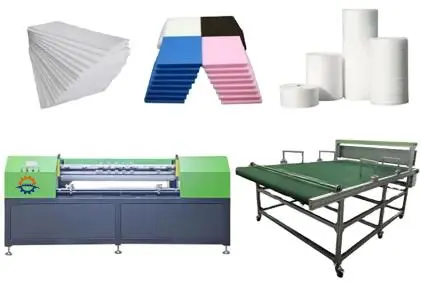The Function of EPE Foam Recycling Machines
In the quest for sustainable practices, industries worldwide are increasingly turning to innovative solutions to address waste management challenges. One such solution lies in the efficient recycling of Expanded Polyethylene (EPE) foam, commonly found in packaging, insulation, and cushioning materials. EPE foam recycling machines play a pivotal role in this process, offering a pathway to transform discarded foam waste into reusable materials. Let's delve into the function and significance of these recycling machines in promoting environmental sustainability.
1. Collection and Sorting:
EPE foam recycling begins with the collection of waste from various sources such as manufacturing facilities, warehouses, and consumer disposal. This collected waste undergoes meticulous sorting to separate EPE foam from other materials like plastics, cardboard, or metals. Advanced sorting technologies ensure the purity of the foam waste, facilitating efficient recycling processes downstream.
2. Shredding and Crushing:
Once sorted, the EPE foam waste is fed into the recycling machine, where it encounters the first step of transformation: shredding or crushing. High-powered shredders or crushers break down the foam into smaller, uniform pieces, increasing its surface area for subsequent processing. This initial step not only reduces the volume of the foam waste but also prepares it for further densification or melting processes.

3. Melting or Densifying:
The shredded EPE foam then enters the heart of the recycling machine, where it undergoes either melting or densification. In the melting process, the foam is subjected to controlled heat, causing it to liquefy into a viscous state. Alternatively, densification involves compressing the shredded foam under high pressure, compacting it into denser blocks or pellets. Both methods significantly reduce the volume of the foam waste, facilitating easier handling and transportation.
4. Extrusion or Pelletizing:
In some recycling machines, melted EPE foam may undergo extrusion to form continuous strands or pellets. This extruded material can serve as raw feedstock for manufacturing new products or undergoing further processing. Pelletizing involves shaping the melted foam into small pellets, ready for reuse or resale in various industries. These pellets retain the versatile properties of EPE foam and find applications in diverse sectors such as construction, automotive, and consumer goods.
5. Cooling and Solidification:
Following extrusion or pelletizing, the recycled EPE foam material undergoes cooling and solidification to attain its final form. Rapid cooling mechanisms ensure that the material maintains its desired shape and properties, ready for packaging or reuse. This crucial step enhances the quality and usability of the recycled foam, meeting the stringent requirements of end-users and manufacturers alike.
6. Packaging or Reuse:
The recycled EPE foam material is packaged for sale or reused in a myriad of applications. Industries embrace recycled foam as an eco-friendly alternative for packaging, insulation, cushioning, and more. Additionally, recycled EPE foam can be further processed to create new products or composite materials, extending its lifecycle and maximizing resource efficiency.
Conclusion:
EPE foam recycling machines represent a beacon of hope in the global pursuit of sustainability. By harnessing advanced technologies and innovative processes, these machines empower industries to tackle the challenges of foam waste management head-on. From collection to reuse, each step in the recycling journey contributes to the preservation of our environment and the conservation of valuable resources. As we continue to embrace the principles of circular economy, EPE foam recycling machines stand as indispensable allies in our quest for a greener, more sustainable future.
- Previous: Key Questions to Ask When Ordering PP Ball Valve
- Next: None


